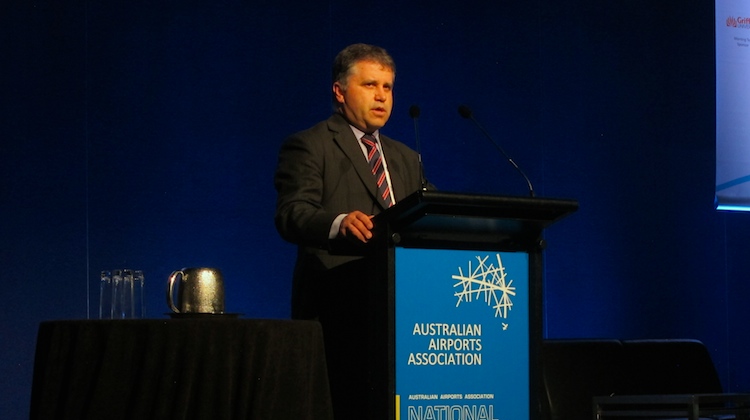
Forecast growth in passenger numbers, coupled with the persistent threat of a terrorist attack will place unsustainable pressure on security checkpoints at the nation’s airports unless new techniques introduced, a conference has heard.
To manage the anticipated 260 million travellers expected to pass through Australia’s airports by 2030, regulators are looking at providing expedited screening for lower-risk passenger groups, increasing the use of Smart Gate technology and matching the security measures required at an airport to its risk profile.
Department of Infrastructure and Regional Development executive director Sachi Wimmer, who heads up the Office of Transport Security (OTS), says the industry needed to balance security outcomes with maintaining a viable transport industry.
To that end, the OTS was refining its approach to risk, Wimmer said.
“We are moving away from addressing all vulnerabilities as it is absolutely impossible and prohibitively expensive to plug every security hole that we can identify,” Wimmer told delegates at the Australian Airports Association national conference on the Gold Coast on Tuesday.
“Instead we are focusing on where we judge the highest risks to be and that means our judgements are about when the most plausible risks are play out and that’s really important.”
The Office of Transport Security was established in 2004, following the September 11 terrorist attacks in the US in 2001 and the Bali bombings in 2002, and its purpose was to “support Australia’s economic and social prosperity through effective transport security regulation”, Wimmer said.
Wimmer said OTS was looking at matching security requirements at airports so that they were proportionate to their respective risk profiles, along with helping reduce the administrative burden on industry.
Separately, OTS was considering offering expedited security screening for predetermined lower-risk passengers, which would reduce the pressure at screening points and allowing border agencies to focus on passengers of unknown or higher risk.
There were also changes planned to what passengers were allowed to carry on board an aircraft, with small scissors with blades less than 6cm in length, small sharp tools of similar length and metal cutlery including knives with rounded edges to be permitted.
“If we take into account forecast growth of about four per cent in international departing passengers the 100 per cent screening model that we have in place at the moment is just unsustainable in the long term,” Wimmer said.
“When it comes to regulation one size does not fit all so we need to tailor our regulation to be proportionate to security risk an differentiate between industry sectors and segments.
“This is going to be an essential approach if we are going to have a sustainable system of transport security regulation into the future.”
The conference also heard from Department of Infrastructure and Regional Development Secretary Mike Mrdak, who spoke about the recent trial of new procedures for the explosives detection tests (EDT) at the security scanning point at Brisbane, Melbourne, Sydney, Coffs Harbour and Rockhampton airports.
Mrdak said moving the explosives test to before the x-ray machines, and screening people in batches of up to three at a time helped improve queueing times and increased passenger flows by up to 50 per cent.
“We actually have now changed the requirements to allow for a more flexible approach to ETD,” Mrdak said.
“It’s led to efficiencies. Having the ETD at the front of the screening point also provides an opportunity to commence the screening process earlier to use effectively the dead time of passengers when they are waiting in static queues which means they are not delayed further downstream.”
“It is this sort of practical approach which in my view will be critical to dealing with some of the growth pressures we have in the future.”
















David
says:when or how quickly can you get rid of the silly 20,000 kg MTOW limit which allows 50 seater Dash 8 – 300’s to avoid security, but not 50 seater Fokker 50’s because of slightly different MTOW (just under 20,000 kgs vs just over 20,000 kgs !!!
Regional airports are suffering as security adds enormous costs, when some airports might only have 1 flights a day, which therefore might just be viable without high security costs, but are not viable with them.